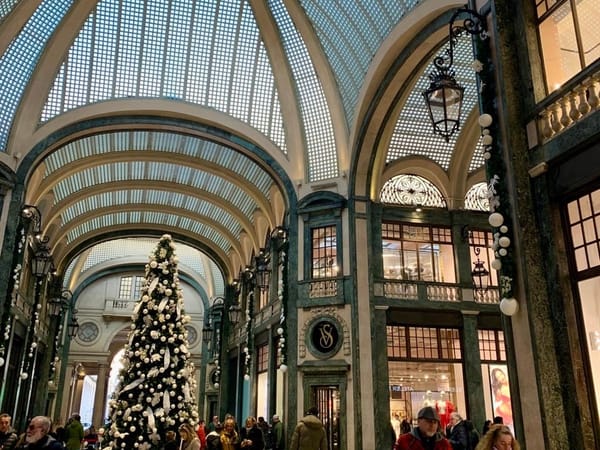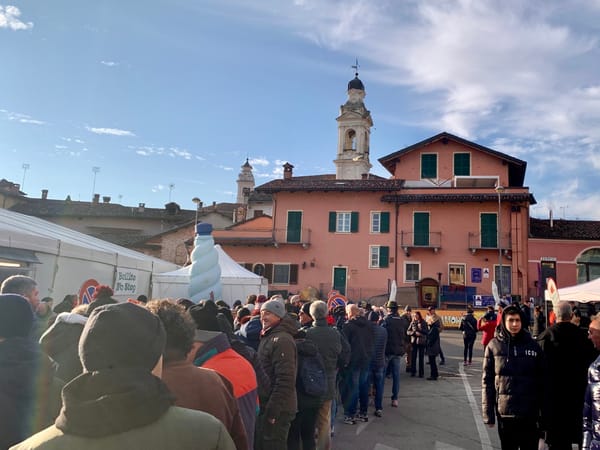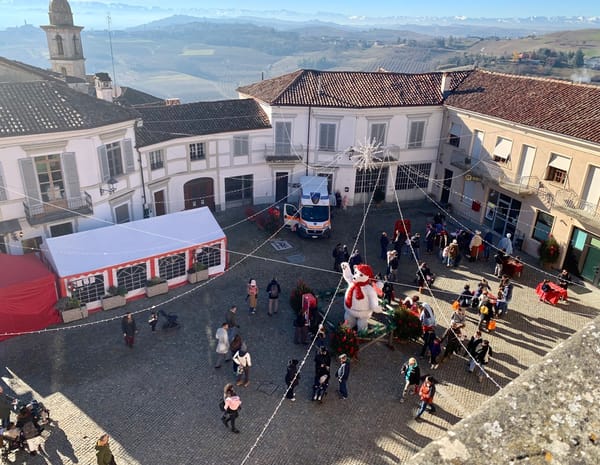What to Do in Piedmont, Italy
From vineyard visits to Alpine hikes, there's something for everyone.
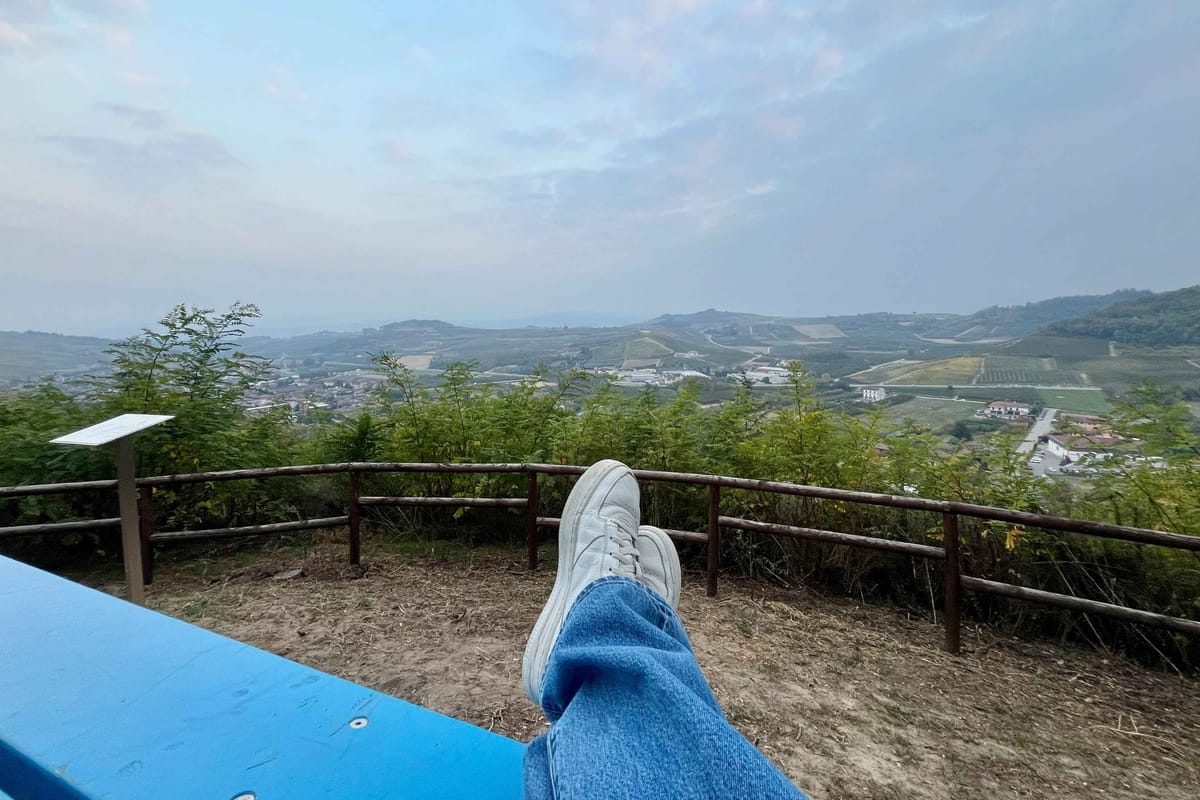
Piedmont’s one of those funny places that either you’ve heard of—or you haven’t. Those in the know will tell you this northwestern corner of Italy is famous for wine, food, and white truffles.
But if you’ve only just heard about this hidden gem, perhaps you’re wondering what Piedmont, Italy is known for, whether it’s worth visiting—and what to do when you get there.
As Italy’s largest mainland region, Piedmont is also one of the most diverse. Its Alpine peaks, rolling hills, and elegant cities create a tapestry of landscapes and history that’s hard to find elsewhere.
Whether it’s your first visit or your fifteenth, Piedmont always has a surprise up its sleeve—from hidden mountain fortresses to a wine bank perched on Roman ruins.
Here’s my pick of the best things to do in Piedmont, whatever time of year you visit.
Piedmont for Wine Lovers
For enophiles, Piedmont is a bucket-list destination (and even if you only know the difference between red and white, you’ll still love it). This is the homeland of Barolo and Barbaresco, the “king and queen” of Italian wines. The town of Barolo often appears on lists of the most beautiful places in Piedmont—but you’ll have to visit to decide for yourself.
There are two main wine-producing areas: the UNESCO-listed Langhe-Roero-Monferrato hills around Alba and Asti in the south, and the Alpine slopes northeast of Turin. The southern hills are where you’ll find the finest Piedmontese wines, while the mountain vineyards produce lighter, high-altitude wines with character.
Look out for Big Benches as you explore the hills. These playful art installations are dotted around the landscape, designed to help you get a sense of perspective and connect with your inner child.
As Piedmont winters tend to be very cold, most wineries open from spring through autumn, when the weather is mild enough for vineyard tours and tastings. Many are family-run and follow organic or biodynamic methods, so you can sip world-class wines while supporting sustainable viticulture.
Get a detailed overview of Piedmont's weather by month.
You can join a private tour from Alba or Turin, or contact wineries directly to arrange a visit—just bear in mind that you’ll need a car or driver, as public transport doesn’t reach most estates. For a more adventurous way to explore the vineyards, try an e-bike or Vespa tour, or take a helicopter ride or hot-air balloon flight over the Langhe-Roero-Monferrato hills.
True wine buffs should head to the Wine Bank in Bra—an initiative by the Slow Food movement that preserves Italy’s wine heritage. Its nineteenth-century cellars, built atop Roman ruins, hold more than 100,000 bottles.
Throughout the year, you’ll find wine and food festivals celebrating the region’s vintages—especially in spring and early summer, when events like Vinum, Barbaresco a Tavola, Festa della Barbera, and Dolcetto Summer Fest take over local towns and villages.
Visiting Piedmont’s wine country? Make your stay a stylish one with these top 10 luxury hotels.
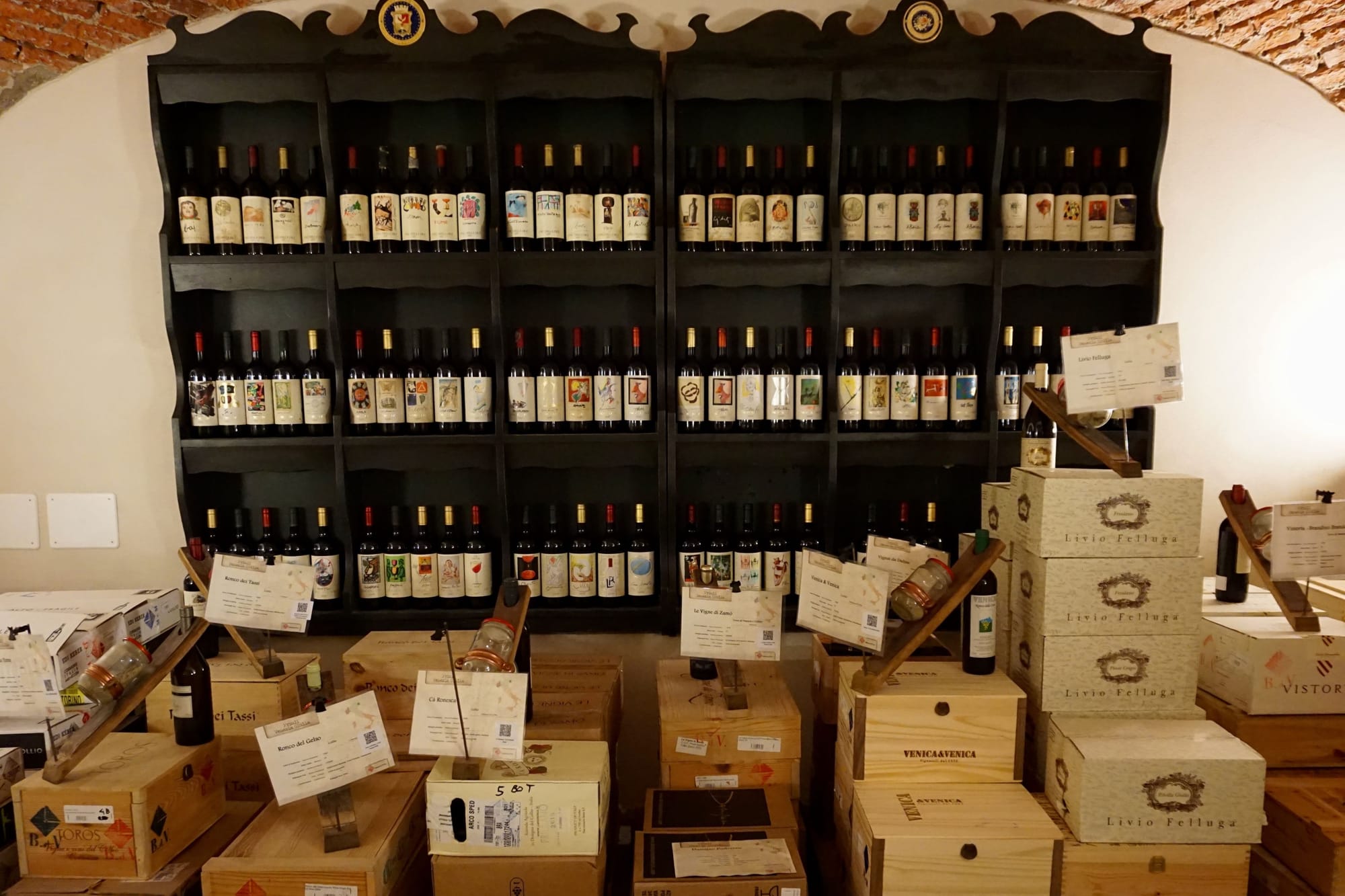
Piedmont for Food Lovers
Foodies, get ready to discover your new favourite region—Piedmont is Italy’s gastronomic destination par excellence thanks to its rich culinary and agricultural heritage and ongoing commitment to sustainability and innovation.
Turin was once the seat of the Savoy royal family, whose influence shaped the elegant dining culture still found here today. Add to that the world-class wines and a thriving Slow Food movement (founded in the town of Bra), and you’ve got a region that celebrates traditional, local, and sustainable food. It’s no wonder Piedmont boasts 34 Michelin-starred restaurants and attracts top chefs from across Italy.
Perhaps Piedmont’s most iconic local delicacy is the rare white truffle that grows around Alba in autumn, and is the star of the truffle festival that takes place every year from October to December.
Heading to Piedmont this November? This guide covers harvest festivals and events beyond Alba.
Even within the region, Piedmont’s food scene is wonderfully varied. Turin is famous for its coffee and chocolate culture, traditional piole (family-run taverns), tramezzini sandwiches, aperitivo bars, and gianduiotti—those melt-in-your-mouth hazelnut chocolates.
Head into the hills, and you’ll find another side of Piedmontese cuisine: rich dairy traditions born from Alpine pastures. The region produces more than 30 types of cheese, including Castelmagno, Robiola di Roccaverano, Toma, and Fontina from neighbouring Val d’Aosta.
It’s also known for its exceptional beef dishes, from brasato al Barolo (beef slow-cooked in red wine) to carne cruda all’Albese (Piedmont’s answer to steak tartare) and vitello tonnato—thin veal slices topped with a creamy tuna sauce.
Pasta lovers won’t be disappointed either. Try tajarin—fine golden strands of egg pasta—or agnolotti al plin, small hand-pinched parcels filled with meat or vegetables. Order with butter, sage, and a sprinkling of shaved truffle to understand why the beauty of Piedmont’s cuisine lies in its elegant simplicity.
For food lovers, the best thing to do is to explore Piedmont’s many culinary delights for yourself. Whether you’re dining in a Michelin-starred restaurant surrounded by vineyards, a traditional piola in Turin, or a countryside trattoria during one of the many food festivals, you’ll taste the depth and diversity that make Piedmont one of Italy’s most exciting food regions.
Piedmont for History and Culture Seekers
If you love history, architecture, and a bit of mystery, Piedmont won’t disappoint. This region’s cultural heart is Turin—Italy’s elegant former capital and the birthplace of the modern Italian state. Often described as Italy’s most regal city, Turin blends Baroque grandeur with a streak of intrigue and industrial innovation.
Start at the Reggia di Venaria Reale, known as the “Versailles of Italy.” This magnificent royal palace and UNESCO World Heritage Site offers grand gardens, ornate halls, and a glimpse into the opulent world of the House of Savoy.
Back in the city centre, the Mole Antonelliana—once the tallest brick building in the world—now houses the fascinating National Cinema Museum, while the Automobile Museum tells the story of Turin’s deep ties to car design and industry (this is Fiat’s hometown, after all).
Turin also holds one of the world’s most impressive archaeological collections at its Egyptian Museum—second only to Cairo’s—and is home to the mysterious Turin Shroud. But beyond its museums, the city has a legendary mystical side. It’s said to sit at the intersection of two energy triangles: one of white magic (with Lyon and Prague) and one of black (with London and San Francisco).
If churches are your thing, Piedmont has plenty of them—and they’re some of the most atmospheric in Italy. The Sacra di San Michele, perched dramatically on a mountaintop west of Turin, is the region’s most iconic landmark and is said to have inspired Umberto Eco’s The Name of the Rose.
Meanwhile, the Basilica of Superga, overlooking Turin from its hilltop, offers panoramic views and a moving royal crypt. Across the countryside, you’ll also find countless small parish churches, each with its own local charm and centuries of history.
If you prefer wandering through historic towns and hidden villages, Piedmont is made for road tripping, and many travellers find a car essential for exploring beyond the main cities. In the Langhe hills, towns like La Morra, Barolo, and Castiglione Falletto invite slow exploration among vineyards and medieval towers. To the north, Orta San Giulio—set on the serene shores of Lake Orta—feels like stepping into a fairytale.
Piedmont for Nature and Outdoor Lovers
For wide-open landscapes, dramatic mountains, and quiet lakes, you’ll find plenty to fall in love with in Piedmont’s great outdoors. From the soaring peaks of the Piedmont Alps to the wooded hills and truffle forests of the south, this region is a dream for hikers, skiers—and anyone who just wants to breathe some fresh mountain air.
Each season brings its own kind of magic: in spring and summer, the Alps come alive with wildflowers and crisp blue skies, making it the perfect time for hiking in Piedmont. Head to valleys like Val di Susa and Val Chisone, where trails wind past mountain villages, alpine meadows, and even the historic Forte di Fenestrelle—a vast 18th-century fortress nicknamed the “Great Wall of Europe.”
For those who prefer a gentler pace, the Gran Paradiso National Park, Italy’s oldest national park, offers accessible walking routes and a chance to spot ibex and marmots in their natural habitat.
Summer is also ideal for escaping the heat of southern Piedmont and heading to the region’s lakes, Orta and Maggiore: both stunning alternatives to Lake Como, but far less crowded. Think lazy swims, peaceful boat rides, and long lakeside lunches with mountain views.
In autumn, the air turns crisp and Piedmont’s famous white truffles come into season—making it the perfect time to join a local trifulau—professional truffle hunter—and their dog on a truffle hunt. It’s also prime time for scenic drives and photography, as the vineyards blaze with autumn colour.
Heading to Piedmont this autumn? Save time—and luggage space—with this done-for-you packing list.
When winter arrives, the mountains transform into a playground for snow lovers. Ski resorts like Sestriere, Usseaux, Bardonecchia, and Limone Piemonte offer everything from downhill skiing to snowshoeing and cosy mountain chalets.
And if you’d rather relax than race down slopes (like me), you can soak in natural hot springs at Acqui Terme or other spa towns dotted across the region.
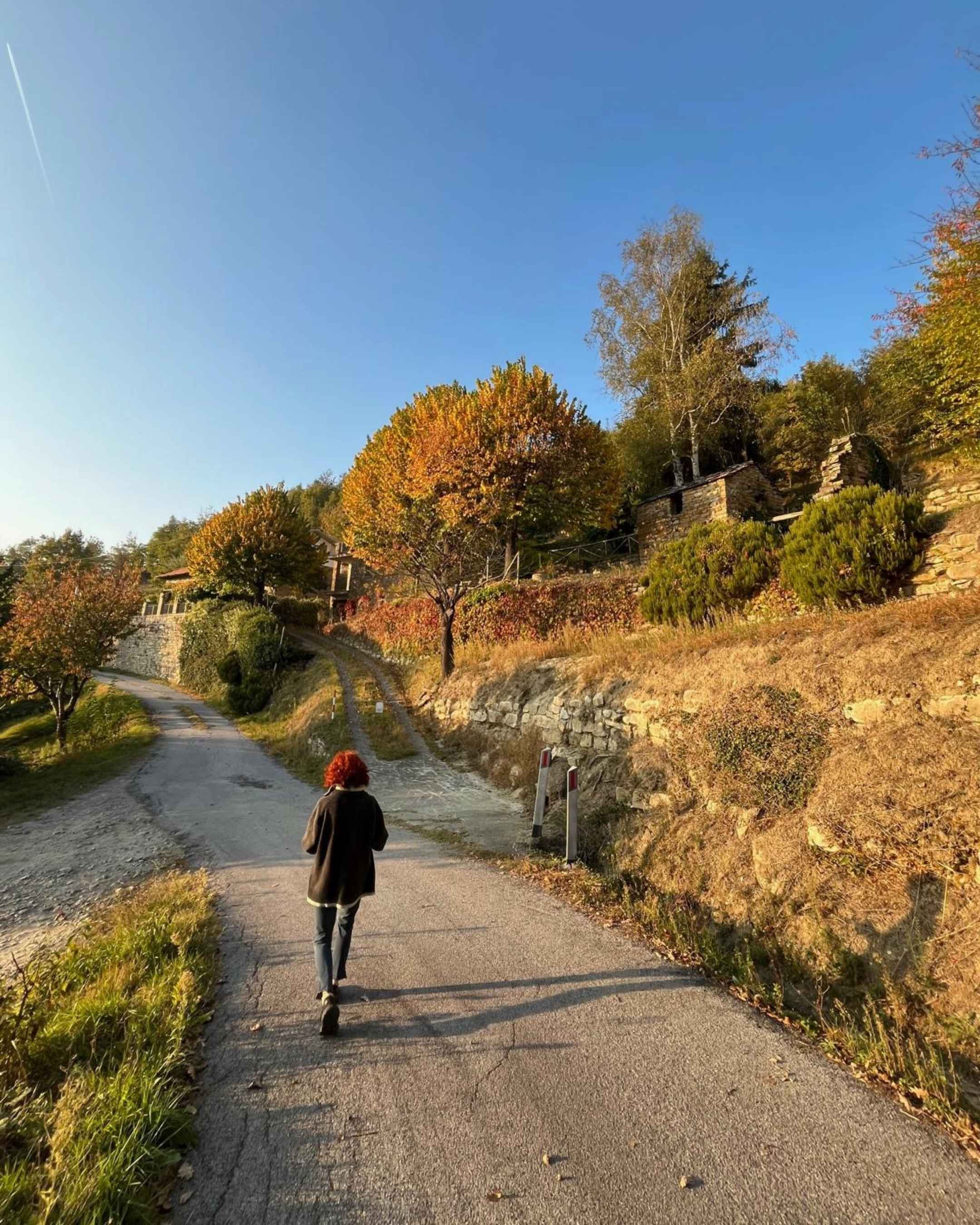
Piedmont Will Keep You Coming Back for More
Whether you come for the Barolo, the beef, or the basilicas, Piedmont will have you setting up a new flight alert for Turin as soon as you get home.
Planning a visit? My full Piedmont travel guide covers when to go, where to stay, and insider tips to help you experience the best of this unforgettable region.
Enjoyed this post? Support Secret Piemonte and buy me a caffè ☕


